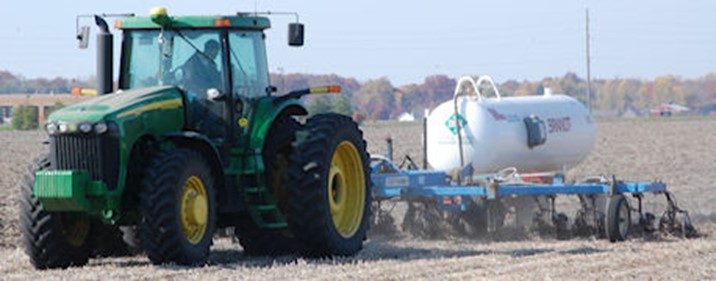
Applying anhydrous ammonia in the fall is a common practice in the Midwest. It’s a great opportunity to minimize spring soil compaction and to lessen the spring workload which gives you a wider window for timely planting.
Anhydrous ammonia is subject to environmental losses, whether it is fall or spring applied. To minimize these losses, I highly recommend stabilizing your NH3 with N-Serve and wait for soil temperatures to approach 50 degrees and trending cooler before applying NH3 in the fall.
Why 50 degrees? Let’s talk about it.
When you apply NH3 to the soil, it converts to ammonium nitrogen (Nh4) which has a positive charge. This positive charged N “attaches” to small soil particles that have negative charges. This “magnet” effect holds the NH4 nitrogen at the application depth. However, there are bacteria in the soil, called nitrosomonas bacteria, which convert the ammonium nitrogen to nitrate nitrogen (NO3) which has a negative charge. With a negative charge the NO3 nitrogen is not “attached” to the soil particles which leaves it vulnerable to environmental losses and not available to next years’ corn crop. When soil temperatures are at 50 degrees and trending lower, the nitrosomonas bacteria start slowing down their activity and do nothing when the soil freezes. N-Serve in the soil stops the nitrosomonas bacteria’s ability to convert NH4 to NO3, no matter what the soil temperatures is. N-Serve will naturally start to break down in the soil when soil temperatures are at 50 degrees and higher. So when NH3 treated with N-Serve is applied when soil temperatures are at or above 50 degrees in the fall, the N-Serve is still stabilizing your fall applied NH3, but there will be less N-Serve in the soil next spring to do its job. If you have any questions or concerns about fall applied anhydrous ammonia, please contact WS AG Center.